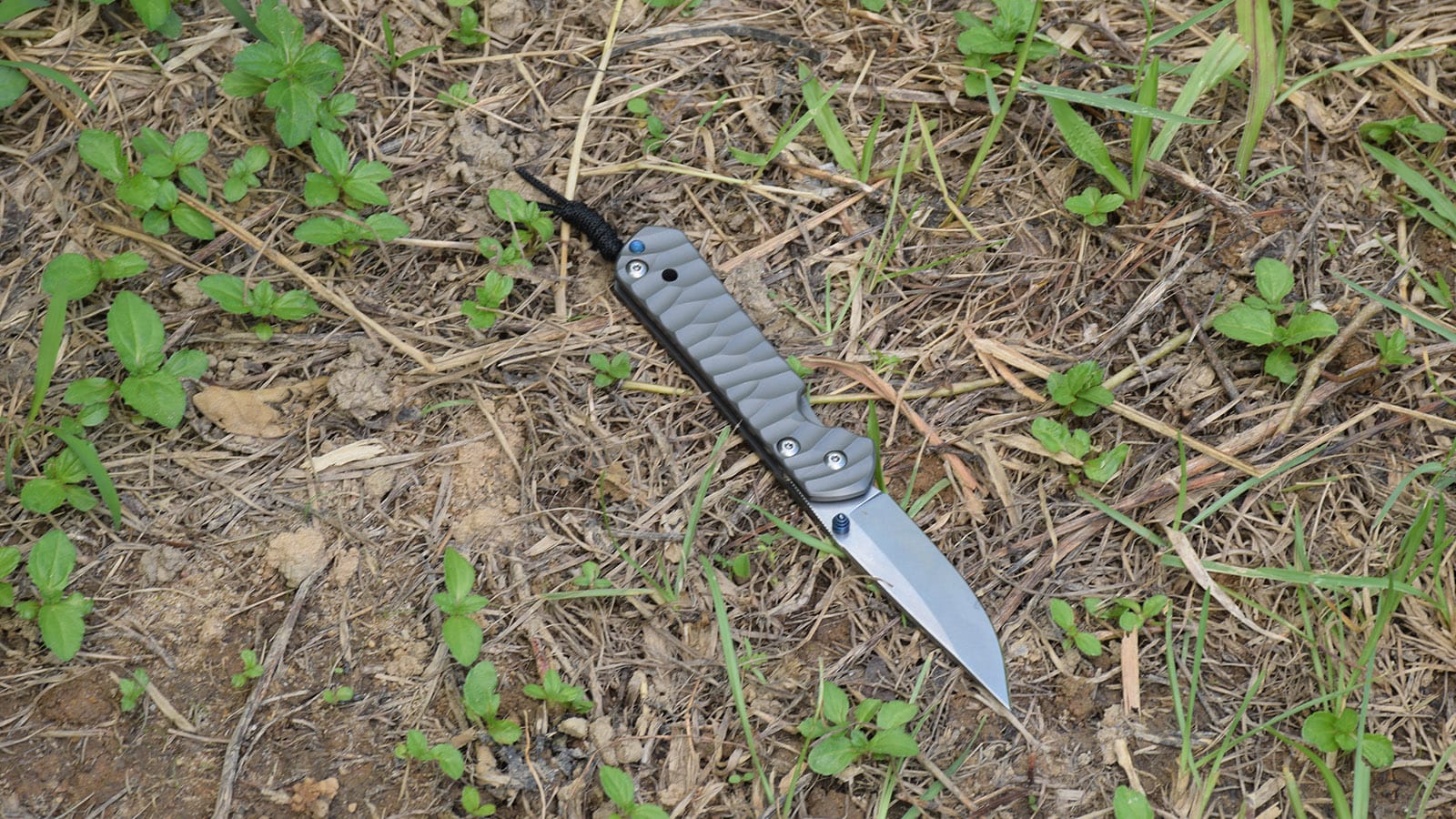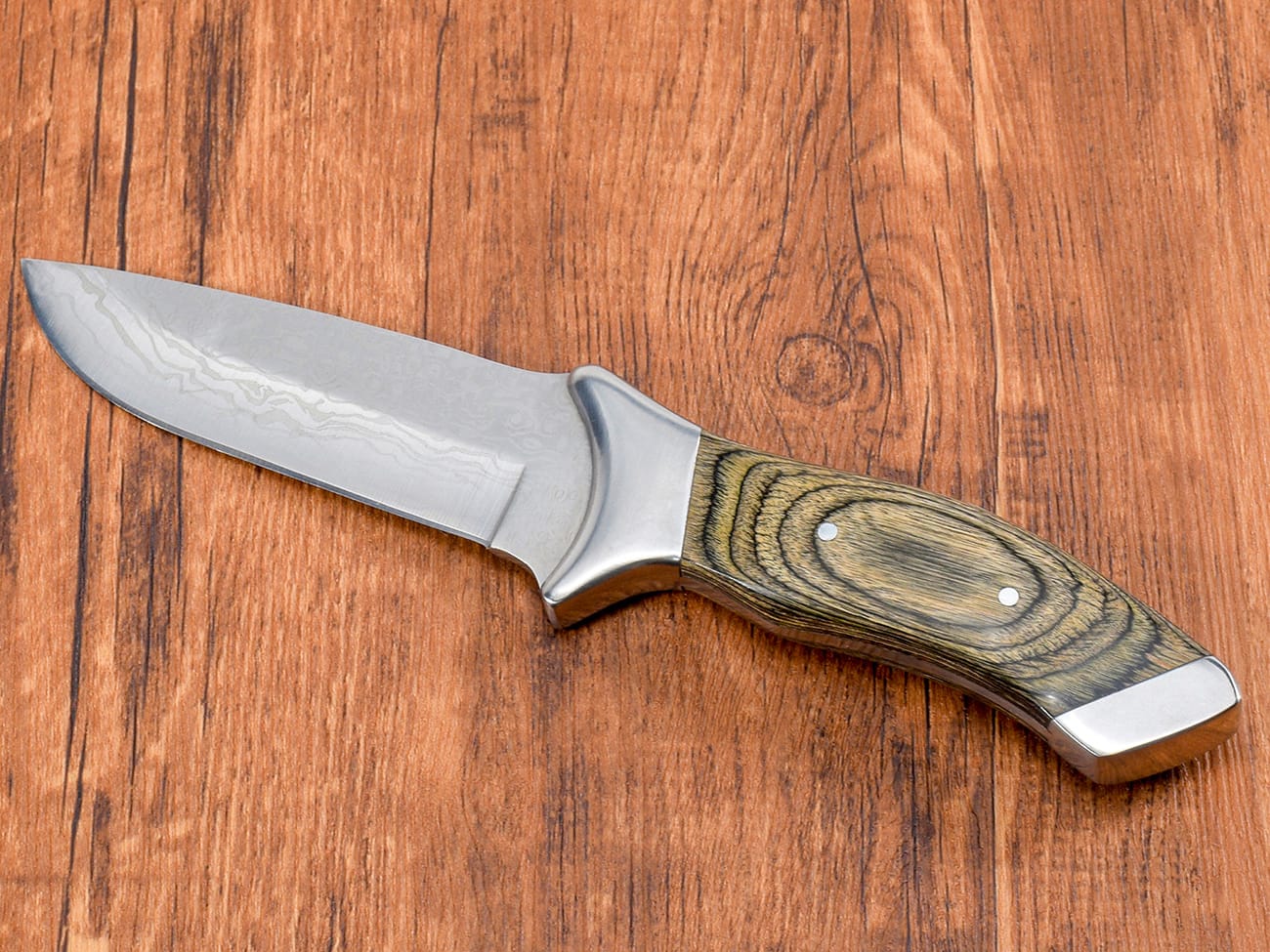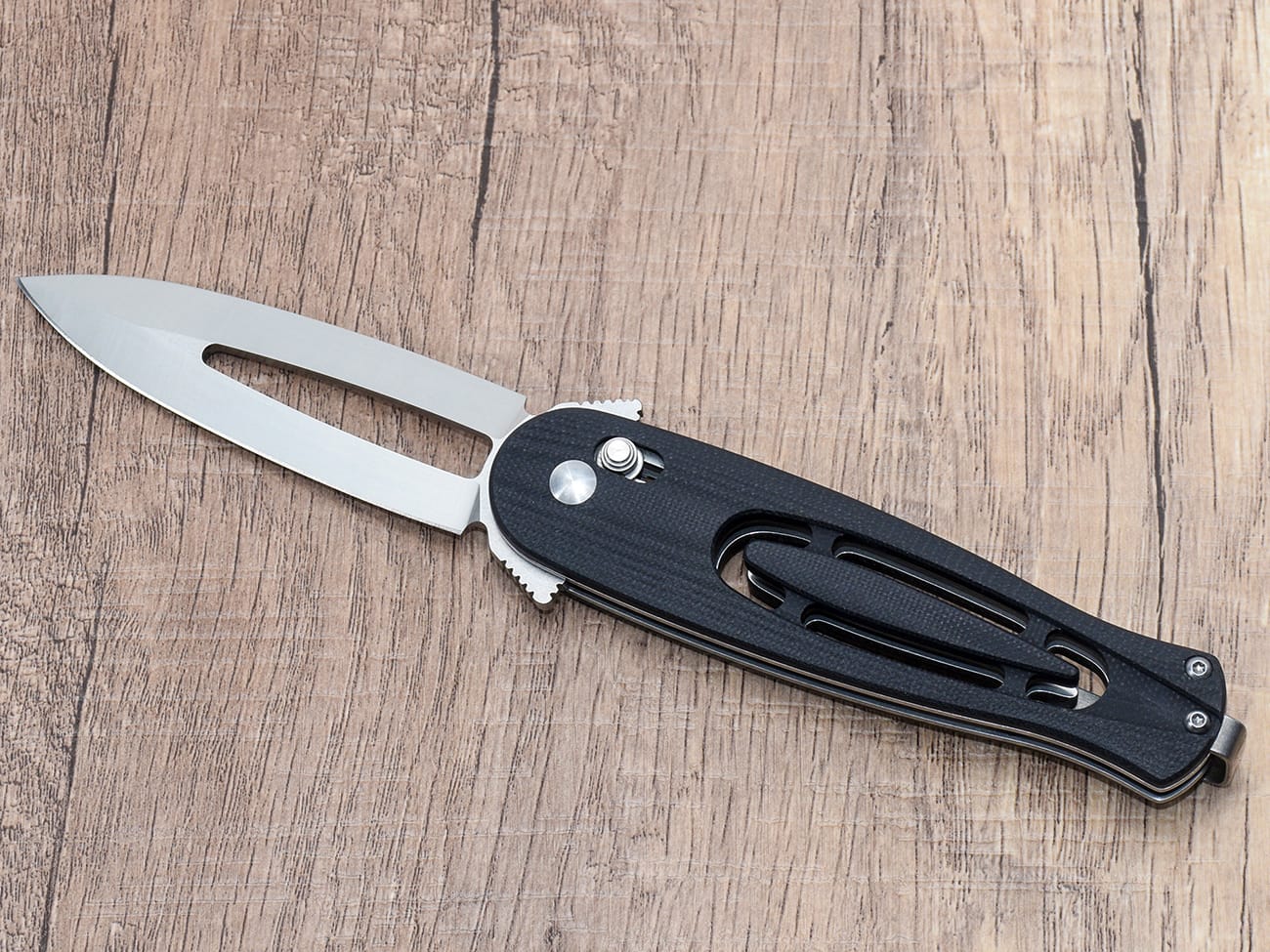Stainless steel knives are a popular choice for both kitchen and outdoor use, prized for their durability and resistance to corrosion. However, many knife enthusiasts and everyday users wonder: will a knife with a stainless steel handle rust? This comprehensive guide will explore the intricacies of stainless steel, its properties, and how to maintain your knife to prevent rust and ensure longevity.Whether you’re a chef, outdoor enthusiast, or simply someone who appreciates a good knife, understanding the potential for rust on stainless steel handles is crucial. This article will provide valuable insights into the composition of stainless steel, factors that can lead to rust, and practical tips to keep your knife in pristine condition. Read on to discover the truth about stainless steel knife handles and rust.
What Exactly Is Stainless Steel?
Stainless steel is an alloy of iron, chromium, and other elements. The key to its corrosion resistance lies in the chromium content, which forms a protective layer of chromium oxide on the surface. This invisible barrier shields the underlying metal from oxygen and moisture, the primary culprits behind rust formation.
Can Stainless Steel Really Rust?
Contrary to popular belief, stainless steel can rust under certain conditions. While it’s significantly more resistant to corrosion than regular steel, it’s not entirely immune. Factors such as environmental conditions, maintenance, and the specific composition of the stainless steel can all play a role in its susceptibility to rust.
What Causes Rust on Stainless Steel Knife Handles?
Several factors can contribute to rust formation on stainless steel knife handles:
- Exposure to harsh chemicals
- Prolonged contact with saltwater
- High humidity environments
- Scratches or damage to the protective oxide layer
- Low-quality or improper heat treatment of the steel
Understanding these factors is crucial for preventing rust on your pocket knife and maintaining its appearance and functionality.
How Does the Composition of Stainless Steel Affect Rust Resistance?
The composition of stainless steel plays a significant role in its rust resistance. Different grades of stainless steel contain varying amounts of chromium, nickel, and other elements. For instance, 304 stainless steel, commonly used in knife handles, contains about 18% chromium and 8% nickel, making it highly resistant to rust in most environments.
Are All Stainless Steel Knife Handles Equally Rust-Resistant?
Not all stainless steel knife handles are created equal when it comes to rust resistance. The grade of stainless steel, manufacturing process, and overall quality of the knife can all impact its ability to resist corrosion. High-end knives often use superior grades of stainless steel and undergo more rigorous quality control, resulting in better rust resistance.
How Can You Prevent Rust on Your Stainless Steel Knife Handle?
Preventing rust on your stainless steel knife handle is largely a matter of proper care and maintenance. Here are some effective strategies:
- Clean and dry your knife thoroughly after each use
- Avoid prolonged exposure to moisture
- Store your knife in a dry environment
- Use a protective oil or wax on the handle
- Avoid using abrasive cleaners that can damage the protective oxide layer
By following these simple steps, you can significantly extend the life of your stainless steel blade knife and keep it looking like new.
What Should You Do If You Notice Rust on Your Knife Handle?
If you spot rust on your stainless steel knife handle, don’t panic. In most cases, it can be removed with some simple techniques:
- Use a mild abrasive like baking soda paste
- Try a specialized rust remover product
- Gently scrub with fine steel wool
- For stubborn rust, consider professional restoration
Remember, prevention is always better than cure when it comes to rust on your knife handle.
How Does the Environment Affect Stainless Steel Knife Handles?
The environment in which you use and store your knife can significantly impact its susceptibility to rust. Coastal areas with high salt content in the air, humid climates, and industrial environments with corrosive chemicals in the atmosphere can all increase the risk of rust formation on stainless steel knife handles.

Can Using Your Knife in the Kitchen Lead to Rust?
While stainless steel is generally well-suited for kitchen use, certain practices can increase the risk of rust:
- Leaving knives in the sink or dishwasher
- Exposure to acidic foods for prolonged periods
- Using harsh detergents or abrasive sponges
- Improper storage in damp conditions
By being mindful of these factors, you can keep your kitchen knife handle rust-free and in excellent condition.
Are There Any Myths About Stainless Steel and Rust?
Several myths persist about stainless steel and rust. Let’s debunk some common misconceptions:
- Myth: Stainless steel never rusts Reality: While highly resistant, stainless steel can rust under certain conditions
- Myth: All stainless steel is the same Reality: There are many grades of stainless steel with varying levels of corrosion resistance
- Myth: Rust on stainless steel means the knife is ruined Reality: In most cases, rust can be removed and further corrosion prevented with proper care
Understanding these facts can help you better care for your stainless steel knife handle.
How Does the Manufacturing Process Affect Rust Resistance?
The manufacturing process of a stainless steel knife handle can significantly impact its rust resistance. Factors such as heat treatment, surface finishing, and quality control all play a role in determining how well the handle will resist corrosion over time.High-quality knife brands often employ advanced manufacturing techniques to enhance the rust resistance of their stainless steel handles. These may include:
- Precise heat treatment to optimize the steel’s microstructure
- Advanced surface finishing techniques to create a smoother, more resistant surface
- Rigorous quality control to ensure consistency in composition and treatment
By investing in a well-made knife, you’re more likely to enjoy a rust-resistant handle that stands the test of time.
What Role Does Chromium Play in Preventing Rust?
Chromium is the key element that gives stainless steel its corrosion-resistant properties. When exposed to oxygen, chromium forms a thin, invisible layer of chromium oxide on the surface of the steel. This protective layer, often referred to as a “passive layer,” acts as a barrier against moisture and other corrosive elements.The effectiveness of this protective layer depends on several factors:
- Chromium content: Generally, the higher the chromium content, the better the rust resistance
- Surface condition: A smooth, undamaged surface allows for better formation of the oxide layer
- Environmental conditions: Extreme conditions can sometimes overwhelm the protective capabilities of the chromium oxide layer
Understanding the role of chromium can help you appreciate why proper care and maintenance are essential for preserving your knife’s rust resistance.
Can Different Types of Steel in the Blade Affect the Handle’s Rust Resistance?
While the handle and blade of a knife are often made of different materials, the type of steel used in the blade can indirectly affect the handle’s rust resistance. Here’s how:
- Galvanic corrosion: When dissimilar metals are in contact, especially in the presence of an electrolyte (like water), one metal can accelerate the corrosion of the other
- Maintenance habits: Some blade materials require more frequent or specialized care, which can impact how you treat the handle
- Overall knife quality: Higher-end knives often use superior materials throughout, including more corrosion-resistant handle materials
When choosing a knife, consider both the blade material and handle material to ensure optimal performance and longevity.
How Does Heat Treatment Affect the Rust Resistance of Stainless Steel Handles?
Heat treatment is a crucial step in the manufacturing process of stainless steel knife handles. It can significantly impact the steel’s microstructure and, consequently, its rust resistance. Proper heat treatment can:
- Optimize the distribution of alloying elements
- Improve the formation and stability of the protective chromium oxide layer
- Enhance overall corrosion resistance
However, improper heat treatment can lead to decreased rust resistance and other undesirable properties. This is why it’s important to choose knives from reputable manufacturers who prioritize quality in their production processes.
Are There Any Coatings That Can Enhance Rust Resistance on Stainless Steel Handles?
While stainless steel itself is often sufficient for rust resistance, some manufacturers apply additional coatings to enhance protection. These can include:
- PVD (Physical Vapor Deposition) coatings
- Ceramic coatings
- Specialized polymer coatings
These coatings can provide an extra layer of protection against corrosion, as well as improve the handle’s appearance and grip. However, it’s important to note that no coating is permanent, and proper care is still necessary to maintain the knife’s condition.
How Does Regular Use Affect the Rust Resistance of a Stainless Steel Knife Handle?
Regular use of your knife can actually help maintain its rust resistance. Here’s why:
- Formation of the passive layer: Regular exposure to air helps maintain the chromium oxide layer
- Removal of contaminants: Frequent handling and cleaning can prevent the buildup of substances that might promote corrosion
- Early detection: Regular use means you’re more likely to notice and address any early signs of rust
However, it’s crucial to balance use with proper care and maintenance to ensure the longevity of your knife handle.
What Are Some Signs That Your Stainless Steel Knife Handle Might Be Developing Rust?
Catching rust early is key to preventing significant damage to your knife handle. Look out for these signs:
- Reddish-brown spots or streaks
- Pitting or small holes in the surface
- Rough or uneven texture in specific areas
- Discoloration that doesn’t wipe away easily
If you notice any of these signs, it’s important to address them promptly to prevent further corrosion.
How Can You Test the Quality of a Stainless Steel Knife Handle?
While professional metallurgical tests are the most accurate way to determine steel quality, there are some simple tests you can perform at home:
- Magnet test: High-quality stainless steel is often less magnetic
- Water test: Place a drop of water on the handle and observe how it behaves
- Visual inspection: Look for consistent coloration and smooth finish
- Brand reputation: Research the manufacturer’s reputation for quality
Remember, these tests are not definitive but can give you a general idea of the handle’s quality.
What Are Some Alternative Materials to Stainless Steel for Rust-Resistant Knife Handles?
While stainless steel is popular, there are other materials that offer excellent rust resistance:
- Titanium: Extremely corrosion-resistant but more expensive
- G10: A durable, non-metallic option that’s impervious to rust
- Carbon fiber: Lightweight and corrosion-resistant
- Ceramic: Completely rust-proof but can be brittle
Each material has its pros and cons, so consider your specific needs when choosing a knife handle material.
How Does the Knife’s Design Affect Its Susceptibility to Rust?
The design of a knife can play a significant role in its rust resistance:
- Seamless construction: Fewer joints and crevices mean fewer places for moisture to accumulate
- Rounded edges: Smoother transitions between parts can prevent water trapping
- Proper drainage: Well-designed knives allow water to drain easily, reducing the risk of rust
When choosing a knife, consider not just the materials but also the overall design for optimal rust resistance.In conclusion, while stainless steel knife handles are highly resistant to rust, they are not completely immune. Understanding the factors that contribute to rust formation and following proper care and maintenance practices can help you keep your knife in excellent condition for years to come. Remember these key points:
- Stainless steel can rust under certain conditions
- The quality and composition of the steel greatly affect its rust resistance
- Regular cleaning and proper storage are crucial for preventing rust
- Early detection and treatment of rust can prevent significant damage
- Consider both material and design when choosing a rust-resistant knife
By keeping these factors in mind and treating your knife with care, you can enjoy a rust-free, reliable tool for all your cutting needs.




